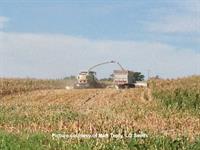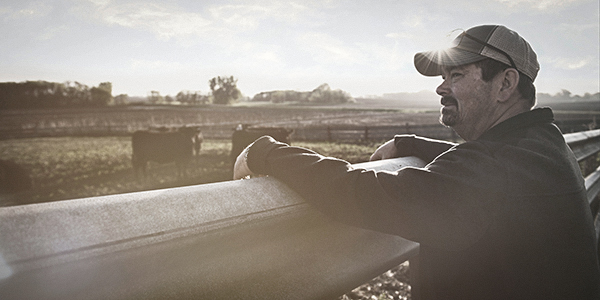AGRONOMICSUPPORT
YOU CAN TAKETO THE FIELD
Corn Silage Considerations
Growing up on a dairy farm, I found that one of my favorite times of year was when we began chopping silage and filling our stave silos. At the time, I did not give much thought to the importance of this harvest, but thinking more about it, this was our feed supply for the next year! Like any feed in high-producing cow herds, quality of feed is very important. I hope to address a few considerations to be made as you begin to chop corn silage.
 One of the most important considerations is a timely harvest with respect to the moisture content of the silage. Corn silage moisture significantly impacts the storability, as well as livestock performance. If you are storing silage in a bunker the best moisture is between 65-70%. If you are filling a silo the appropriate moisture is between 62-67%.
One of the most important considerations is a timely harvest with respect to the moisture content of the silage. Corn silage moisture significantly impacts the storability, as well as livestock performance. If you are storing silage in a bunker the best moisture is between 65-70%. If you are filling a silo the appropriate moisture is between 62-67%.
It is recommended to do a burndown of a few plants before you plan to harvest. This will give you an idea of where the silage moisture is and help you plan on when your ideal harvest window will be. Moisture will drop 0.5% per day and may dry faster if you are in drier conditions.
Another consideration is make sure you are monitoring the nitrate content in the corn silage. This is an issue in drought conditions where nitrates accumulate in the stalk. There are a few ways to avoid this issue. First, cut the corn higher, leaving more of the stalk in the field. This will help because the nitrates will accumulate in the bottom of the stalk where the highest concentration is. Also, ensiling the silage for 3-4 weeks will drop your nitrates by 50%. Ideally nitrates should be under 1000 ppm for safe feeding. It is best to have the silage sampled after the ensiling process to make sure that levels are safe for feeding.
Lastly, choosing the correct hybrid to use to maximize silage yields is important. Height of corn is not always a characteristic that identifies a good silage hybrid, however most silage hybrids will be taller. The weight of the ear can account for a large percentage of yield. Hybrids that have worked well in Minnesota are LG5470, LG5499, LG5494, and LG5565. All these hybrids have performed on silage yield, as well as high-quality feed.
Additional Information
http://corn.agronomy.wisc.edu/Silage/S004.aspx
Note: The information in this issue is based upon field observations and third-party information. Since variations in local conditions may affect the information and suggestions contained in this issue, LG Seeds disclaims legal responsibility therefore. Always read and follow label instructions.
Advantage Acre, LG Seeds and design are trademarks of AgReliant Genetics, LLC.
Download a copy of this Technical Bulletin: Corn Silage Cnsiderations - Northern Focus






Technical Team Agronomist